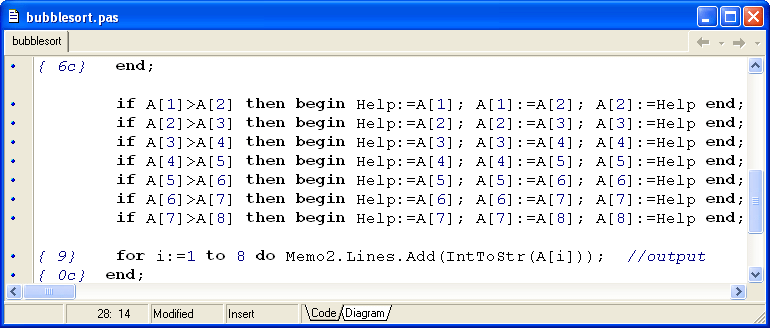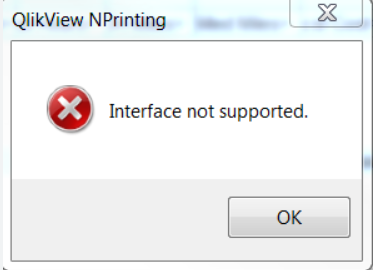Thought of saving this one here. For those who still use delphi in 2023, here are the features you can access. Just in case you have questions or issues encountered, just drop me a line
Coffee Cup
...control Excel with OLE?
Autor: Thomas Stutz
[ Print tip ]
Tip Rating (503):
uses
ComObj;
var
ExcelApp: OleVariant;
implementation
procedure TForm1.Button1Click(Sender: TObject);
const
// SheetType
xlChart = -4109;
xlWorksheet = -4167;
// WBATemplate
xlWBATWorksheet = -4167;
xlWBATChart = -4109;
// Page Setup
xlPortrait = 1;
xlLandscape = 2;
xlPaperA4 = 9;
// Format Cells
xlBottom = -4107;
xlLeft = -4131;
xlRight = -4152;
xlTop = -4160;
// Text Alignment
xlHAlignCenter = -4108;
xlVAlignCenter = -4108;
// Cell Borders
xlThick = 4;
xlThin = 2;
var
ColumnRange: OleVariant;
// Function to get the number of Rows in a Certain column
function GetLastLine(AColumn: Integer): Integer;
const
xlUp = 3;
begin
Result := ExcelApp.Range[Char(96 + AColumn) + IntToStr(65536)].end[xlUp].Rows.Row;
end;
begin
{ Start Excel }
// By using GetActiveOleObject, you use an instance of Word that's already running,
// if there is one.
try
ExcelApp := GetActiveOleObject('Excel.Application');
except
try
// If no instance of Word is running, try to Create a new Excel Object
ExcelApp := CreateOleObject('Excel.Application');
except
ShowMessage('Cannot start Excel/Excel not installed ?');
Exit;
end;
end;
// Add a new Workbook, Neue Arbeitsmappe ?ffnen
ExcelApp.Workbooks.Add(xlWBatWorkSheet);
// Open a Workbook, Arbeitsmappe ?ffnen
ExcelApp.Workbooks.Open('c:\YourFileName.xls');
// Rename the active Sheet
ExcelApp.ActiveSheet.Name := 'This is Sheet 1';
// Rename
ExcelApp.Workbooks[1].WorkSheets[1].Name := 'This is Sheet 1';
// Insert some Text in some Cells[Row,Col]
ExcelApp.Cells[1, 1].Value := 'SwissDelphiCenter.ch';
ExcelApp.Cells[2, 1].Value := 'http://www.swissdelphicenter.ch';
ExcelApp.Cells[3, 1].Value := FormatDateTime('dd-mmm-yyyy', Now);
// Setting a row of data with one call
ExcelApp.Range['A2', 'D2'].Value := VarArrayOf([1, 10, 100, 1000]);
// Setting a formula
ExcelApp.Range['A11', 'A11'].Formula := '=Sum(A1:A10)';
// Change Cell Alignement
ExcelApp.Cells[2, 1].HorizontalAlignment := xlright;
// Change the Column Width.
ColumnRange := ExcelApp.Workbooks[1].WorkSheets[1].Columns;
ColumnRange.Columns[1].ColumnWidth := 20;
ColumnRange.Columns[2].ColumnWidth := 40;
// Change Rowheight / Zeilenh?he ?ndern:
ExcelApp.Rows[1].RowHeight := 15.75;
// Merge cells, Zellen verbinden:
ExcelApp.Range['B3:D3'].Mergecells := True;
// Apply borders to cells, Zellen umrahmen:
ExcelApp.Range['A14:M14'].Borders.Weight := xlThick; // Think line/ Dicke Linie
ExcelApp.Range['A14:M14'].Borders.Weight := xlThin; // Thin line D邦nne Linie
// Set Bold Font in cells, Fettdruck in den Zellen
ExcelApp.Range['B16:M26'].Font.Bold := True;
// Set Font Size, Schriftgr??e setzen
ExcelApp.Range['B16:M26'].Font.Size := 12;
//right-aligned Text, rechtsb邦ndige Textausrichtung
ExcelApp.Cells[9, 6].HorizontalAlignment := xlright;
// horizontal-aligned text, horizontale Zentrierung
ExcelApp.Range['B14:M26'].HorizontalAlignment := xlHAlignCenter;
// left-aligned Text, vertikale Zentrierung
ExcelApp.Range['B14:M26'].VerticallyAlignment := xlVAlignCenter;
{ Page Setup }
ExcelApp.ActiveSheet.PageSetup.Orientation := xlLandscape;
// Left, Right Margin (Seitenr?nder)
ExcelApp.ActiveSheet.PageSetup.LeftMargin := 35;
ExcelApp.ActiveSheet.PageSetup.RightMargin := -15;
// Set Footer Margin
ExcelApp.ActiveSheet.PageSetup.FooterMargin := ExcelApp.InchesToPoints(0);
// Fit to X page(s) wide by Y tall
ExcelApp.ActiveSheet.PageSetup.FitToPagesWide := 1; // Y
ExcelApp.ActiveSheet.PageSetup.FitToPagesTall := 3; // Y
// Zoom
ExcelApp.ActiveSheet.PageSetup.Zoom := 95;
// Set Paper Size:
ExcelApp.PageSetup.PaperSize := xlPaperA4;
// Show/Hide Gridlines:
ExcelApp.ActiveWindow.DisplayGridlines := False;
// Set Black & White
ExcelApp.ActiveSheet.PageSetup.BlackAndWhite := False;
// footers
ExcelApp.ActiveSheet.PageSetup.RightFooter := 'Right Footer / Rechte Fu?zeile';
ExcelApp.ActiveSheet.PageSetup.LeftFooter := 'Left Footer / Linke Fu?zeile';
// Show Excel Version:
ShowMessage(Format('Excel Version %s: ', [ExcelApp.Version]));
// Show Excel:
ExcelApp.Visible := True;
// Save the Workbook
ExcelApp.SaveAs('c:\filename.xls');
// Save the active Workbook:
ExcelApp.ActiveWorkBook.SaveAs('c:\filename.xls');
end;
procedure TForm1.FormDestroy(Sender: TObject);
begin
// Quit Excel
if not VarIsEmpty(ExcelApp) then
begin
ExcelApp.DisplayAlerts := False; // Discard unsaved files....
ExcelApp.Quit;
end;
end;



